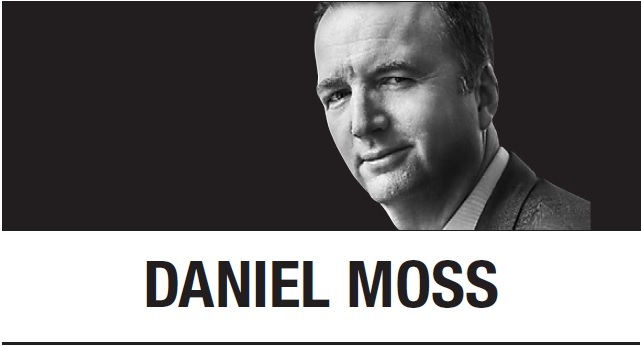
The world’s biggest economies have rolled out a plethora of monetary support measures over the past two months. If there’s one central bank that knows how hard bottling them back up will be, it’s Japan, where special operations have become a permanent fixture. Tokyo’s example suggests that policymakers will have an expansive role for years to come, particularly given the depth of the slump from the coronavirus outbreak.
Japan headed into its lockdown hobbled by poor choices, chiefly an ill-timed hike in the consumption tax at the end of 2019.
Gross domestic product fell an annualized 3.4 percent in the first quarter from the prior three months, the government said Monday, following a drop of 7.3 percent from October to December. The contraction in the second quarter will be about 22 percent, according to economists surveyed by Bloomberg News, mirroring the scale of declines in the rest of the world.
Everyone is reeling from COVID-19. What makes Japan stand out isn’t just the tax fiasco, but the long funk that preceded what’s likely to become the worst global downturn in a century. The Bank of Japan had been buttressing its economy with massive stimulus long before the Federal Reserve, Bank of England and European Central Bank embarked on a course of ultra-low interest rates and quantitative easing in the wake of the Great Recession. It took that trio a long time to withdraw their support; they had barely disembarked before the virus prompted them to dive back in.
Given diminishing hopes for a rapid and vigorous bounce, it’s wishful thinking for central bankers to set expectations for a brisk exit from at least some COVID-era measures. Fed Chair Jerome Powell said in a May 13 speech that some programs will be put back in the box once the crisis has passed. He may be waiting a while, if the global financial crisis is any guide. Output is likely to remain well below pre-virus levels until at least the end of 2021.
In his address last week to the Peterson Institute for International Economics, Powell implicitly linked the ravages COVID-19 will visit on the American economy to the kind of blues playing in Japan since the early 1990s. The bulk of the Fed’s unparalleled support for the economy is likely to remain if Powell is serious about avoiding the nightmare he sketched:
“The loss of thousands of small- and medium-sized businesses across the country would destroy the life’s work and family legacy of many business. … Prolonged recession and weak recovery could also discourage business investment and expansion, further limiting the resurgence of jobs as well as the growth of capital stock and the pace of technological advancement. The result could be an extended period of low productivity growth and stagnant incomes.”
Powell is alluding to “Japanification,” according to Roberto Perli, a former Fed economist now tracking monetary policy at Cornerstone Macro in Washington, D.C. The term has come to encompass a multitude of sins, but at the core it refers to a prolonged stretch of low investment, low productivity, stagnant incomes and microscopic interest rates. This almost certainly means a commitment to near-zero levels for years at the Fed and its siblings.
Japan has shown the way. Last year was an ignominious anniversary of zero rates, once seen as a piece of local exotica, along with quantitative easing. Successive BOJ governors found it almost impossible to extricate themselves from ever-more innovative measures to spur growth and prices. Haruhiko Kuroda, who has led the central bank since 2013, tried to lay the groundwork for a gradual withdrawal in 2018. Trade wars and the coronavirus have conspired against him. A meaningful step back may never happen. Officials are again worrying about deflation, records of recent policy meetings show.
The quantitative easing that the Fed first undertook in late 2008 was revived a couple of times in ensuing years. America’s central bank put it aside in 2014, only to resume in March when the pandemic began rippling through the US Once the capability is there, investors become accustomed to low-cost financing and freak out when they conclude officials are preparing to reverse course. Such a backlash in 2013, known as the taper tantrum, forced then-Fed Chair Ben Bernanke to retreat from indications he would scale back bond purchases. More recently, market gyrations the during the US-China trade conflict last year foreshadowed three cuts in interest rates; just months earlier, the Fed was talking about rate increases.
It’s easy to forget, but there was a time when beltway intellectuals and masters of the universe fixated on the idea that Japan’s economic model was superior and the country would one day rule the commercial world. Time to start watching Japan closely again, this time for a lesson on inevitable decline.
Daniel Moss
Daniel Moss is a Bloomberg Opinion columnist covering Asian economies. -- Ed.
(Bloomberg)








